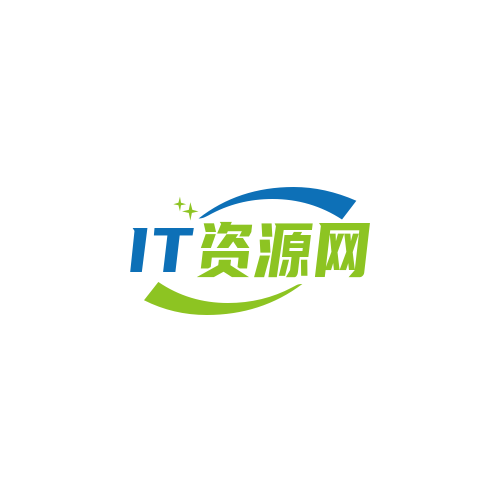背景知识
ListView使用非常广泛,对于使用ListView的应用来说,下拉刷新是必不可少要实现的功能。
我们常用的微博、网易新闻,搜狐新闻都使用了这一功能,如下图所示。
微博
搜狐新闻
具体学习:
首先分析下拉刷新的具体操作过程:
用户手指在ListView上按下并往下拉----->出现一个提示的View在ListView顶部----->ListView内容更新,顶部的提示View消失
具体实现步骤:
1.创建继承自ListView的RefreshListView,并添加顶部提示View
public class RefreshListView extends ListView { View header;// 顶部提示View public RefreshListView(Context context) { super(context); initView(context); } public RefreshListView(Context context, AttributeSet attrs) { super(context, attrs); initView(context); } public RefreshListView(Context context, AttributeSet attrs, int defStyleAttr) { super(context, attrs, defStyleAttr); initView(context); } private void initView(Context context) { // LayoutInflater作用是加载布局 LayoutInflater inflater = LayoutInflater.from(context); header = inflater.inflate(R.layout.header_layout, null); this.addHeaderView(header); } }
顶部提示View布局文件 header_layout.xml:
1 <?xml version="1.0" encoding="utf-8"?> 2 <LinearLayout xmlns:android="http://schemas.android.com/apk/res/android" 3 android:layout_width="match_parent" 4 android:layout_height="match_parent" 5 android:orientation="vertical" > 6 7 <RelativeLayout 8 android:layout_width="match_parent" 9 android:layout_height="wrap_content" 10 android:paddingTop="10dip" 11 android:paddingBottom="10dip" 12 > 13 <LinearLayout 14 android:layout_width="wrap_content" 15 android:layout_height="wrap_content" 16 android:orientation="vertical" 17 android:id="@+id/layout" 18 android:layout_centerInParent="true" 19 android:gravity="center" 20 > 21 <!-- 提示文字 --> 22 <TextView 23 android:id="@+id/tips" 24 android:layout_width="wrap_content" 25 android:layout_height="wrap_content" 26 android:text="下拉可以刷新" 27 /> 28 <!-- 距上次更新至今的时间 --> 29 <TextView 30 android:id="@+id/time" 31 android:layout_width="wrap_content" 32 android:layout_height="wrap_content" 33 /> 34 35 </LinearLayout> 36 <!-- 箭头 --> 37 <ImageView 38 android:id="@+id/arrow" 39 android:layout_width="wrap_content" 40 android:layout_height="wrap_content" 41 android:layout_toLeftOf="@id/layout" 42 android:src="@drawable/pull_to_refresh_arrow" 43 /> 44 <!-- 更新进度条 --> 45 <ProgressBar 46 android:id="@+id/progress" 47 android:layout_width="wrap_content" 48 android:layout_height="wrap_content" 49 style="?android:attr/progressBarStyleSmall" 50 android:layout_toLeftOf="@id/layout" 51 android:visibility="gone" 52 /> 53 </RelativeLayout> 54 </LinearLayout>
运行效果图:
2.由上图可以知道,默认加载header是显示出来的。默认我们应该隐藏顶部提示布局header。
1 private void initView(Context context){ 2 //LayoutInflater作用是加载布局 3 LayoutInflater inflater = LayoutInflater.from(context); 4 header = inflater.inflate(R.layout.header_layout, null); 5 measureView(header); 6 headerHeight = header.getMeasuredHeight(); 7 topPadding(-headerHeight); 8 this.addHeaderView(header); 9 } 10 /** 11 * 设置顶部布局的上边距 12 * @param topPadding 13 */ 14 private void topPadding(int topPadding){ 15 //设置顶部提示的边距 16 //除了顶部用参数值topPadding外,其他三个用header默认的值 17 header.setPadding(header.getPaddingLeft(), topPadding, 18 header.getPaddingRight(), header.getPaddingBottom()); 19 //使header无效,将来调用onDraw()重绘View 20 header.invalidate(); 21 } 22 /** 23 * 通知父布局,占用的宽和高 24 */ 25 private void measureView(View view){ 26 //LayoutParams are used by views to tell their parents 27 //how they want to be laid out. 28 //LayoutParams被view用来告诉它们的父布局它们应该被怎样安排 29 ViewGroup.LayoutParams p = view.getLayoutParams(); 30 if(p==null){ 31 //两个参数:width,height 32 p = new ViewGroup.LayoutParams(ViewGroup.LayoutParams.MATCH_PARENT, 33 ViewGroup.LayoutParams.WRAP_CONTENT); 34 } 35 //getChildMeasureSpec:获取子View的widthMeasureSpec、heightMeasureSpec值 36 int width = ViewGroup.getChildMeasureSpec(0, 0, p.width); 37 int height; 38 int tempHeight = p.height; 39 if(tempHeight>0){ 40 height = MeasureSpec.makeMeasureSpec(tempHeight, MeasureSpec.EXACTLY); 41 }else{ 42 height = MeasureSpec.makeMeasureSpec(0, MeasureSpec.UNSPECIFIED); 43 } 44 view.measure(width, height); 45 }
运行效果图:
3.监听用户滑动屏幕操作
1.实现OnScrollListener接口
2.根据用户按下、移动、抬起手势来设置不同的响应事件
3.顶部提示View--header有四种状态:
1. 正常状态(NONE)
2.提示用户下拉可以刷新(PULL)
3.提示用户释放可以刷新(RELEASE)
4.提示用户正在刷新状态(REFREASH)
1 public class RefreshListView extends ListView implements OnScrollListener{ 2 View header;//下拉刷新时出现的顶部布局View 3 int headerHeight;//header的高度 4 int firstVisibleItem;//当前界面第一个可见的item的位置 5 6 boolean isFlag;//标志,是在当前显示的listView是在listView最顶端时按下额 7 int startY;//用户按下的Y值 8 9 10 int state;//当前状态 11 final int NONE = 0;//正常状态 12 final int PULL = 1;//提示下拉状态 13 final int RELEASE = 2;//提示释放状态 14 final int REFRESH = 3;//提示正在刷新状态 15 16 17 @Override 18 public void onScrollStateChanged(AbsListView view, int scrollState) { 19 // TODO Auto-generated method stub 20 this.scrollState = scrollState; 21 } 22 @Override 23 public void onScroll(AbsListView view, int firstVisibleItem, 24 int visibleItemCount, int totalItemCount) { 25 // TODO Auto-generated method stub 26 this.firstVisibleItem = firstVisibleItem; 27 } 28 @Override 29 public boolean onTouchEvent(MotionEvent ev) { 30 // TODO Auto-generated method stub 31 switch (ev.getAction()) { 32 case MotionEvent.ACTION_DOWN: 33 if(firstVisibleItem == 0){ 34 isFlag = true;//ListView最顶端按下,标志值设为真 35 startY = (int)ev.getY(); 36 } 37 break; 38 case MotionEvent.ACTION_MOVE: 39 onMove(ev); 40 break; 41 case MotionEvent.ACTION_UP: 42 if(state == RELEASE){ 43 state = REFRESH; 44 //加载数据 45 refreshViewByState(); 46 iRefreshlistener.onRefresh(); 47 }else if(state == PULL){ 48 state = NONE; 49 isFlag = false; 50 refreshViewByState(); 51 } 52 break; 53 } 54 return super.onTouchEvent(ev); 55
onMove()方法----->根据用户下拉距离的不同设置不同的响应方法
1 private void onMove(MotionEvent ev){ 2 //如果不是最顶端按下,则直接返回 3 if(!isFlag){ 4 return; 5 } 6 int currentY = (int)ev.getY();//当前的Y值 7 int space = currentY - startY;//用户向下拉的距离 8 int topPadding = space - headerHeight;//顶部提示View距顶部的距离值 9 switch (state) { 10 //正常状态 11 case NONE: 12 if(space>0){ 13 state = PULL;//下拉的距离大于0,则将状态改为PULL(提示下拉更新) 14 refreshViewByState();//根据状态的不同更新View 15 } 16 break; 17 case PULL: 18 topPadding(topPadding); 19 if(space>headerHeight+30//下拉的距离大于header的高度加30且用户滚动屏幕,手指仍在屏幕上 20 &&scrollState == SCROLL_STATE_TOUCH_SCROLL ){ 21 state = RELEASE;//将状态改为RELEASE(提示松开更新) 22 refreshViewByState(); 23 } 24 break; 25 case RELEASE: 26 topPadding(topPadding); 27 if(space<headerHeight+30){//用户下拉的距离不够 28 state = PULL; //将状态改为PULL 29 refreshViewByState(); 30 }else if(space<=0){ //用户下拉的距离为非正值 31 state = NONE; //将状态改为NONE 32 isFlag = false; //标志改为false 33 refreshViewByState(); 34 } 35 break; 36 } 37 }
根据不同状态,改变用户界面的显示
1 /** 2 * 根据当前状态state,改变界面显示 3 * state: 4 * NONE:无操作 5 * PULL:下拉可以刷新 6 * RELEASE:松开可以刷新 7 * REFREASH:正在刷新 8 */ 9 private void refreshViewByState(){ 10 //提示 11 TextView tips = (TextView)header.findViewById(R.id.tips); 12 //箭头 13 ImageView arrow = (ImageView)header.findViewById(R.id.arrow); 14 //进度条 15 ProgressBar progress = (ProgressBar)header.findViewById(R.id.progress); 16 //箭头的动画效果1,由0度转向180度,即箭头由朝下转为朝上 17 RotateAnimation animation1 = new RotateAnimation(0, 180, 18 RotateAnimation.RELATIVE_TO_SELF,0.5f, 19 RotateAnimation.RELATIVE_TO_SELF,0.5f); 20 animation1.setDuration(500); 21 animation1.setFillAfter(true); 22 //箭头的动画效果2,由180度转向0度,即箭头由朝上转为朝下 23 RotateAnimation animation2 = new RotateAnimation(180, 0, 24 RotateAnimation.RELATIVE_TO_SELF,0.5f, 25 RotateAnimation.RELATIVE_TO_SELF,0.5f); 26 animation2.setDuration(500); 27 animation2.setFillAfter(true); 28 29 switch (state) { 30 case NONE: //正常状态 31 arrow.clearAnimation(); //清除箭头动画效果 32 topPadding(-headerHeight); //设置header距离顶部的距离 33 break; 34 35 case PULL: //下拉状态 36 arrow.setVisibility(View.VISIBLE); //箭头设为可见 37 progress.setVisibility(View.GONE); //进度条设为不可见 38 tips.setText("下拉可以刷新"); //提示文字设为"下拉可以刷新" 39 arrow.clearAnimation(); //清除之前的动画效果,并将其设置为动画效果2 40 arrow.setAnimation(animation2); 41 break; 42 43 case RELEASE: //下拉状态 44 arrow.setVisibility(View.VISIBLE); //箭头设为可见 45 progress.setVisibility(View.GONE); //进度条设为不可见 46 tips.setText("松开可以刷新"); //提示文字设为"松开可以刷新" 47 arrow.clearAnimation(); //清除之前的动画效果,并将其设置为动画效果2 48 arrow.setAnimation(animation1); 49 break; 50 51 case REFRESH: //更新状态 52 topPadding(50); //距离顶部的距离设置为50 53 arrow.setVisibility(View.GONE); //箭头设为不可见 54 progress.setVisibility(View.VISIBLE); //进度条设为可见 55 tips.setText("正在刷新..."); //提示文字设为""正在刷新..." 56 arrow.clearAnimation(); //清除动画效果 57 break; 58 59 } 60 }
4.更新数据 由于在RefreshListView中不能直接更新数据,必须设置回调接口来实现更新数据这一功能。
IRefreshListener iRefreshlistener;//刷新数据的接口 ... public void setInterface(IRefreshListener listener){ this.iRefreshlistener = listener; } /** * 刷新数据接口 * @author lenovo * */ public interface IRefreshListener{ public void onRefresh(); }
在MainActivity中实现IRefreshListener接口并实现onRefresh()方法
public class MainActivity extends Activity implements IRefreshListener{ ...... @Override public void onRefresh() { // TODO Auto-generated method stub //handler设置刷新延时效果 Handler handler = new Handler(); handler.postDelayed(new Runnable() { @Override public void run() { // TODO Auto-generated method stub //获取最新数据 getRefreshData(); //通知界面显示 adapter.notifyDataSetChanged(); //通知listView刷新数据完毕 listView.refreshComplete(); } }, 2000); }
刷新完成的操作:
1 public void refreshComplete(){ 2 state = NONE; //状态设为正常状态 3 isFlag = false; //标志设为false 4 refreshViewByState(); 5 //设置提示更新时间间隔 6 Time t = new Time(); 7 t.setToNow(); 8 time = t.hour*60+t.minute-updateTime; 9 updateTime = t.hour*60+t.minute; 10 TextView lastUpdateTime = (TextView)findViewById(R.id.time); 11 lastUpdateTime.setText(time+"分钟前更新"); 12 }
Demo运行效果图

想及时获取最新最有用的Android开发干货,请关注我
转载请注明网址:http://www.cnblogs.com/JohnTsai
如果觉得本文对你的学习工作有所帮助,不妨在右下方点推荐一下,谢谢。
联系我:JohnTsai.Work@gmail.com


发表评论 取消回复